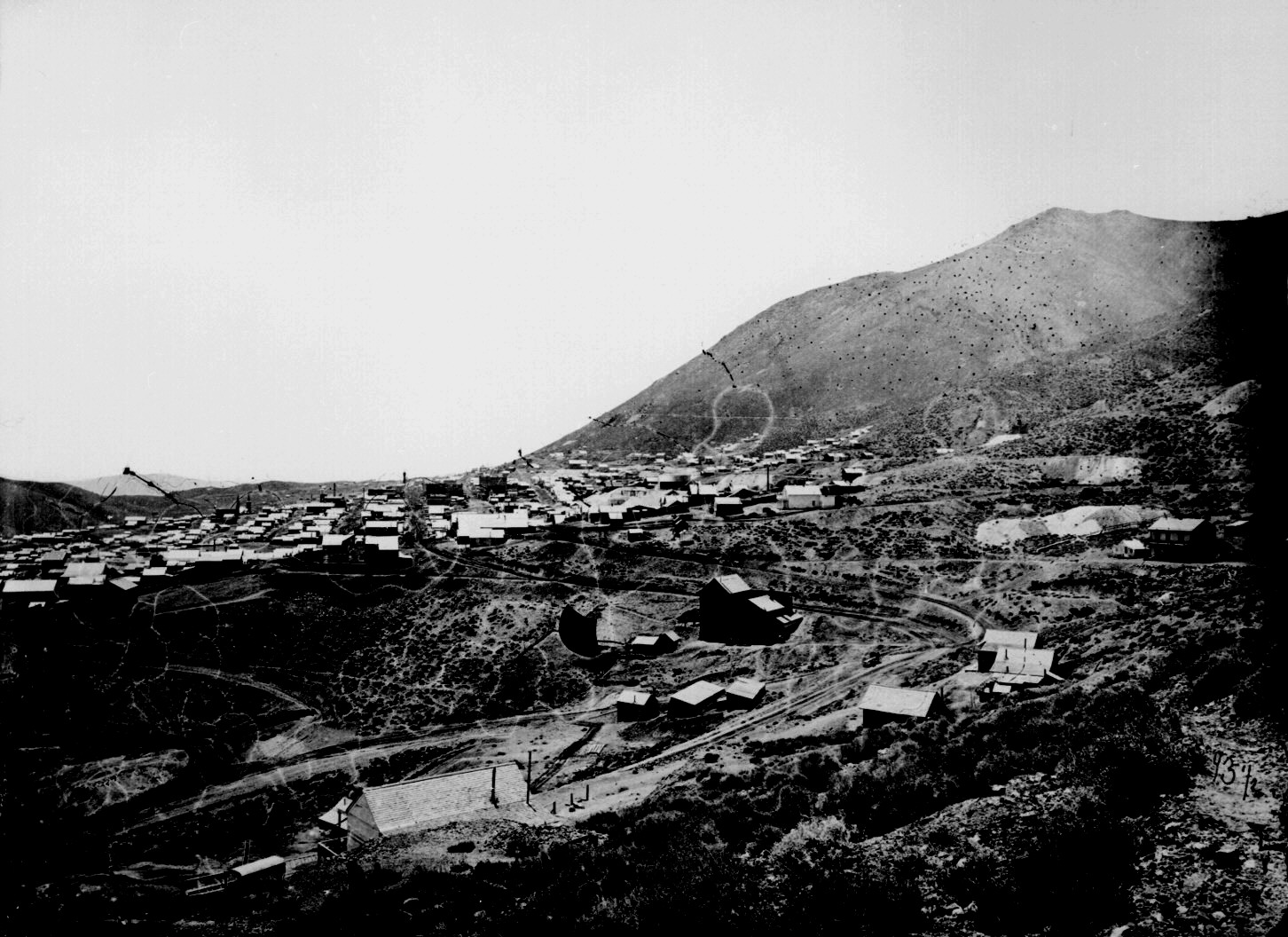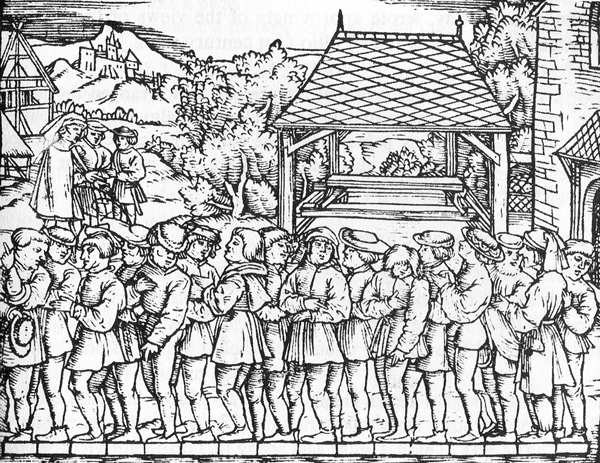|
Reno, New South Wales
Reno is a rural locality in the Cootamundra–Gundagai Regional Council local government area of the Riverina region, of New South Wales, Australia. There was once a gold mining village of the same name. For many years, until at least 2016, the locality was known as Jones Creek. Its population at the 2021 census was 131. Location Reno is located immediately to the north-west of Gundagai. The locality consists of parts of the valleys of two creeks, Jones Creek and Back Station Creek, both right-bank tributaries of the Murrumbidgee River, and the three ranges of hills that border the two creek valleys. The area now known as Reno lies within the traditional land of Wiradjuri people. Name The locality of Reno takes its name from the former mining village. In turn, the mining village was named after the city of Reno, Nevada, the early growth of which was boosted by being the rail junction for Virginia City and vast silver and gold deposits of the Comstock Lode. The former n ... [...More Info...] [...Related Items...] OR: [Wikipedia] [Google] [Baidu] |
Sydney
Sydney is the capital city of the States and territories of Australia, state of New South Wales and the List of cities in Australia by population, most populous city in Australia. Located on Australia's east coast, the metropolis surrounds Sydney Harbour and extends about 80 km (50 mi) from the Pacific Ocean in the east to the Blue Mountains (New South Wales), Blue Mountains in the west, and about 80 km (50 mi) from Ku-ring-gai Chase National Park and the Hawkesbury River in the north and north-west, to the Royal National Park and Macarthur, New South Wales, Macarthur in the south and south-west. Greater Sydney consists of 658 suburbs, spread across 33 local government areas. Residents of the city are colloquially known as "Sydneysiders". The estimated population in June 2024 was 5,557,233, which is about 66% of the state's population. Estimated resident population, 30 June 2017. The city's nicknames include the Emerald City and the Harbour City. There is ev ... [...More Info...] [...Related Items...] OR: [Wikipedia] [Google] [Baidu] |
Virginia City, Nevada
Virginia City is a census-designated place (CDP) that is the county seat of Storey County, Nevada, United States, and the largest community in the county. The city is a part of the Reno, Nevada, Reno–Sparks, Nevada, Sparks Reno, NV Metropolitan Statistical Area, Metropolitan Statistical Area. Virginia City developed as a boomtown with the 1859 discovery of the Comstock Lode, the first major silver deposit discovery in the United States, with numerous mines opening. The population peaked in the mid-1870s, with an estimated 25,000 residents. The mines' output declined after 1878, and the population declined as a result. As of the 2020 United States Census, 2020 Census, the population of Virginia City was 787. History Peter O'Riley and Patrick McLaughlin are credited with the discovery of the Comstock Lode. Henry Comstock, Henry T. P. Comstock's name was associated with the discovery through his own machinations. According to folklore, James Fennimore, nicknamed Old Virginn ... [...More Info...] [...Related Items...] OR: [Wikipedia] [Google] [Baidu] |
Gawler, South Australia
Gawler, established in 1839, is the oldest country town in the state of South Australia. It was named after the second Governor of South Australia, Governor (British Vice-Regal representative) of the colony of South Australia, George Gawler. It is about north of the state capital, Adelaide, and is close to the major wine producing district of the Barossa Valley (wine), Barossa Valley. Topographically, Gawler lies at the confluence of two tributaries of the Gawler River (South Australia), Gawler River, the North Para River, North and South Para River, South Para rivers, where they emerge from a range of low hills. Historically a semi-rural area, Gawler has been swept up in Adelaide's growth in recent years, and is now considered by some as an outer northern suburb of Adelaide. It is counted as a suburb in the Outer Metro region of the Greater Adelaide Planning Region. History The Kaurna people are indigenous to the Adelaide Plains. A British colony, South Australia was esta ... [...More Info...] [...Related Items...] OR: [Wikipedia] [Google] [Baidu] |
James Martin & Co
James Martin & Co was an Australian engineering company which progressed from making agricultural equipment to making railway locomotives. History James Martin & Co. was founded in Gawler, South Australia about 1848 by James Martin as a blacksmith and wheelright business. It soon began to manufacture reapers. The opening of the Gawler railway line in 1857 allowed Adelaide, to the south, to be reached more easily than via the primitive roads of the time. In 1858, Thomas Flett Loutit joined the business as a shareholder and steam power was introduced to the workshop. In 1868 Loutit retired due to ill health. In the 1870s, a new foundry was built on Calton Road.James Martin & Co Phoenix Foundry Town of Gawler During this period James Martin’s nephew, John Felix Martin (1 ... [...More Info...] [...Related Items...] OR: [Wikipedia] [Google] [Baidu] |
Gundagai Independent
''The Gundagai Independent'' is a newspaper published in Gundagai, New South Wales, Australia since 1898. It was previously published as ''The Gundagai Independent and Pastoral, Agricultural and Mining Advocate''. History ''The Gundagai Independent and Pastoral, Agricultural and Mining Advocate'' was first published on 7 September 1898 by Patrick and James Sullivan as a competitor to '' The Gundagai Times and Tumut, Adelong, and Murrumbidgee District Advertiser''. The first issue proclaimed that it would "be run on truly liberal and democratic lines". The ''Independent'' has been continuously published by members of the Sullivan family since its beginning. In 1928 the newspaper shortened its name to ''The Gundagai Independent'' and in 1932 it absorbed its competitor. Digitisation The paper has been digitised as part of the Australian Newspapers Digitisation Program project of the National Library of Australia. See also * List of newspapers in Australia * List of newspaper ... [...More Info...] [...Related Items...] OR: [Wikipedia] [Google] [Baidu] |
Foot (unit)
The foot (standard symbol: ft) is a Units of measurement, unit of length in the imperial units, British imperial and United States customary units, United States customary systems of metrology, measurement. The prime (symbol), prime symbol, , is commonly used to represent the foot. In both customary and imperial units, one foot comprises 12 inches, and one yard comprises three feet. Since international yard and pound, an international agreement in 1959, the foot is defined as equal to exactly 0.3048 meters. Historically, the "foot" was a part of many local systems of units, including the Ancient Greek units of measurement, Greek, Ancient Roman units of measurement, Roman, Chinese units of measurement, Chinese, Units of measurement in France before the French Revolution, French, and English units, English systems. It varied in length from country to country, from city to city, and sometimes from trade to trade. Its length was usually between 250 mm and 335 mm and ... [...More Info...] [...Related Items...] OR: [Wikipedia] [Google] [Baidu] |
Imperial Gallons
The gallon is a unit of volume in British imperial units and United States customary units. The imperial gallon (imp gal) is defined as , and is or was used in the United Kingdom and its former colonies, including Ireland, Canada, Australia, New Zealand, India, South Africa, Malaysia and some Caribbean countries, while the US gallon (US gal) is defined as , and is used in the United States and some Latin American and Caribbean countries. There are four gills in a pint, two pints in a quart, and four quarts (''quarter'' gallons) in a gallon, with the imperial gill being divided into five imperial fluid ounces and the US gill being divided into four US fluid ounces: this, and a slight difference in the sizes of the imperial fluid ounce and the US fluid ounce, give different sizes for the imperial gallon and US gallon. The IEEE standard symbol for both the imperial and US gallons is gal, not to be confused with the gal (symbol: Gal), a CGS unit of acceleration. Definitions Th ... [...More Info...] [...Related Items...] OR: [Wikipedia] [Google] [Baidu] |
Farrier
A farrier is a specialist in equine hoof care, including the trimming and balancing of horses' hooves and the placing of shoes on their hooves, if necessary. A farrier combines some blacksmith's skills (fabricating, adapting, and adjusting metal shoes) with some veterinarian's skills (knowledge of the anatomy and physiology of the lower limb) to care for horses' feet. Traditionally an occupation for men, in a number of countries women have now become farriers. History While the practice of putting protective hoof coverings on horses dates back to the first century, evidence suggests that the practice of nailing iron shoes into a horse's hoof is a much later invention. One of the first archaeological discoveries of an iron horseshoe was found in the tomb of Merovingian king Childeric I, who reigned from 458 to 481 or 482. The discovery was made by Adrien Quinquin in 1653, and the findings were written about by Jean-Jacques Chifflet in 1655. Chifflet wrote that the iro ... [...More Info...] [...Related Items...] OR: [Wikipedia] [Google] [Baidu] |
Headframe
A headframe (gallows frame, winding tower, hoist frame,Ernst, Dr.-Ing. Richard (1989). ''Wörterbuch der Industriellen Technik'' (5th ed.). Wiesbaden: Oscar Brandstetter, 1989. pit frame, shafthead frame, headgear, headstock, poppethead) is the structure above an underground mine shaft, built for hoisting machines, people, and materials. Design Modern headframes are made of steel, concrete, or a combination of both. Timber headframes are no longer used in industrialized countries, but are still used in developing countries. Conventionally, steel headframes are used for drum hoists, and concrete headframes are built for friction hoists; but a steel headframe can be used with a friction hoist for a shaft of smaller capacity and depth. Steel headframes A steel headframe is less expensive than a concrete headframe; the tallest steel headframe measures 87 m. Steel headframes are more adaptable to modifications (making any construction errors easier to remedy), and are conside ... [...More Info...] [...Related Items...] OR: [Wikipedia] [Google] [Baidu] |
Gundagai Independent And Pastoral, Agricultural And Mining Advocate
''The Gundagai Independent'' is a newspaper published in Gundagai, New South Wales, Australia since 1898. It was previously published as ''The Gundagai Independent and Pastoral, Agricultural and Mining Advocate''. History ''The Gundagai Independent and Pastoral, Agricultural and Mining Advocate'' was first published on 7 September 1898 by Patrick and James Sullivan as a competitor to '' The Gundagai Times and Tumut, Adelong, and Murrumbidgee District Advertiser''. The first issue proclaimed that it would "be run on truly liberal and democratic lines". The ''Independent'' has been continuously published by members of the Sullivan family since its beginning. In 1928 the newspaper shortened its name to ''The Gundagai Independent'' and in 1932 it absorbed its competitor. Digitisation The paper has been digitised as part of the Australian Newspapers Digitisation Program project of the National Library of Australia. See also * List of newspapers in Australia * List of newspaper ... [...More Info...] [...Related Items...] OR: [Wikipedia] [Google] [Baidu] |
Stamp Mill
A stamp mill (or stamp battery or stamping mill) is a type of Mill (grinding), mill machine that crushes material by pounding rather than Mill (grinding), grinding, either for further processing or for extraction of metallic ores. Breaking material down is a type of unit operation. Description A stamp mill consists of a set of heavy steel (iron-shod wood in some cases) stamps, loosely held vertically in a frame, in which the stamps can slide up and down. They are lifted by Cam (mechanism), cams on a horizontal rotating camshaft, shaft. As the cam moves from under the stamp, the stamp falls onto the ore below, crushing the rock, and the lifting process is repeated at the next pass of the cam. Each one frame and stamp set is sometimes called a "battery" or, confusingly, a "stamp" and mills are sometimes categorised by how many stamps they have, i.e. a "10 stamp mill" has 10 sets. They usually are arranged linearly, but when a mill is enlarged, a new line of them may be construct ... [...More Info...] [...Related Items...] OR: [Wikipedia] [Google] [Baidu] |
Great Cobar Mine
Great Cobar mine was a copper mine, located at Cobar, New South Wales, Australia, which also produced significant amounts of gold and silver. It operated between 1871 and 1919. Over that period, it was operated by five entities; Cobar Copper Mining Company (1871–1875), Great Cobar Copper-Mining Company (1876–1889), Great Cobar Mining Syndicate (1894–1906), Great Cobar Limited (1906–1914), and finally the Receivership, receiver representing the debentures holders of Great Cobar Limited (1915–1919). Its operations included mines and smelters, at Cobar, an electrolytic copper refinery, coal mine and coke works, at Lithgow, New South Wales, Lithgow, and a coal mine and coke works at Rix's Creek near Singleton, New South Wales, Singleton. Discovery In the winter of 1870, three well and Water well, bore sinkers, two Danes, Thomas Hartman and Charles Campbell (a.k.a. Kempf) and a Scotsman, George Samson Gibb, with two Aboriginal guides, 'Boney' and 'Frank', were heading south ... [...More Info...] [...Related Items...] OR: [Wikipedia] [Google] [Baidu] |








